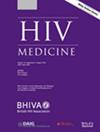CD4+ T-cell recovery in HIV/hepatitis C co-infected patients following successful hepatitis C treatment
Abstract
Introduction
Hepatitis C virus (HCV)/HIV co-infection has been identified as a risk for impaired CD4+ T-cell recovery, possibly mediated by HCV-induced liver fibrosis and/or immune activation. As HCV direct-acting antivirals (DAAs) may partially reverse liver fibrosis and immune activation, sustained HCV virological response (SVR) may lead to improved CD4 recovery. We explored the effect of HCV DAA-induced SVR on CD4 recovery among patients living with both HCV and HIV, including those with poor CD4 recovery on antiretroviral therapy (immunological non-responders [INRs]).
Methods
Subjects aged ≥18 years living with both HIV and HCV who achieved SVR with DAA were included. Pre-DAA CD4 counts were included only after sustained HIV viral suppression and HIV viral suppression was maintained for the duration of the study. Segmented regression of interrupted time series analysis was used to evaluate changes in median CD4 count in the pre-DAA period (−36 months) versus the post-DAA period (+36 months).
Results
In total, 156 patients were included. In the full cohort, median CD4 counts increased by 15% (p = 0.002) in the 6-month period following DAA initiation, whereafter CD4 counts decreased by 2.7% per 6-month period (p = 0.004). Among the 13 INRs, there was no immediate effect on median CD4 in the first 6 months after DAA initiation, whereafter there was a sustained CD4 increase (4.1% per 6-month time interval [p = 0.02]). In total, 54% of INRs recorded a post-DAA CD4 count of >350 cells/mm3.
Conclusions
Successful DAA therapy induced a modest immediate CD4 immunological reconstitution among this cohort of patients living with both HIV and HCV, although this effect waned with time. By contrast, among INRs, achieving HCV SVR led to slower but sustained CD4 count recovery.

 求助内容:
求助内容: 应助结果提醒方式:
应助结果提醒方式:


